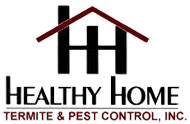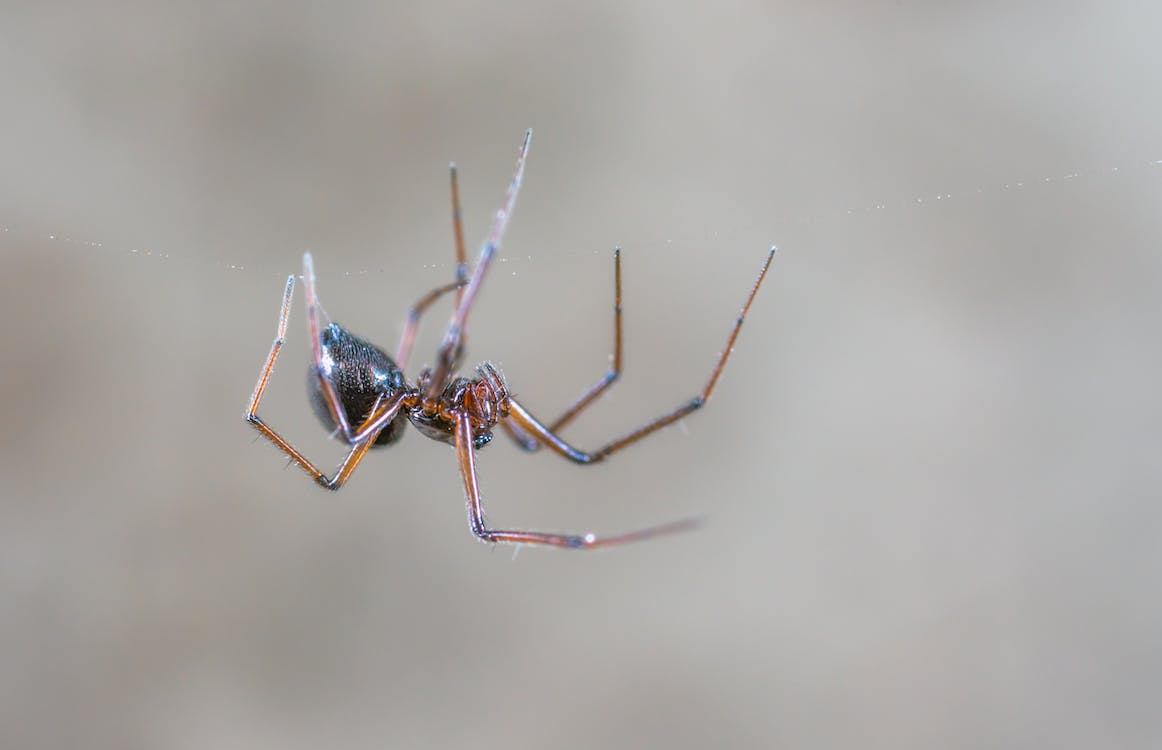Common insects that seek shelter in homes during the winter include:
Ladybugs
Also called Asian Lady Beetles, these insects often gather on the sunny sides of buildings in large numbers during the fall and winter months of the year, seeking warmth. Ladybugs are ectothermic, meaning they rely on external sources of heat to regulate their body temperature. As the weather turns colder, ladybugs seek warm places to hibernate during the winter. Homes provide a stable and warmer environment compared to the outdoors.
Another reason ladybugs may try to come inside your home include overwintering. Ladybugs enter a state of dormancy, known as overwintering, during the colder months. They gather in protected areas, such as the walls or attics of houses, to wait out the winter. These insects are attracted to the warmth and sunlight that homes offer, making them more likely to invade residential spaces.
While they are generally harmless and beneficial in gardens, their presence in large numbers indoors can be a nuisance. Taking preventive measures like sealing cracks and gaps, and using weatherstripping, can help reduce the likelihood of ladybugs entering your home.
Stink Bugs
Stink bugs may enter homes to escape the cold. They release a foul odor when threatened or crushed.
Stink bugs, particularly the brown marmorated stink bug, invade homes in the winter for similar reasons as other insects:
Seeking Warmth: Stink bugs are ectothermic, meaning they rely on external sources of heat to regulate their body temperature. As temperatures drop in the fall and winter, stink bugs search for warm places to escape the cold. Homes provide a more stable and warmer environment compared to the outdoors.
Overwintering: Like many other insects, stink bugs enter a state of dormancy or diapause during the winter months. They seek sheltered locations to hibernate until the weather becomes more favorable. Homes, with their temperature-controlled interiors, become attractive places for stink bugs to overwinter.
Attracted to Light: Stink bugs are often attracted to light, and when they see light emanating from windows or gaps in a home, they may be drawn towards it, leading them to enter buildings.
While stink bugs are not harmful to humans, their presence indoors can be a nuisance, and some people find their odor unpleasant. To prevent stink bugs from invading your home, it’s advisable to seal cracks and gaps, repair screens on windows and doors, and take other measures to make it more difficult for them to enter.
Cluster Flies
These flies congregate in large numbers in attics and wall voids to overwinter.
Cluster flies invade homes in the winter for reasons related to their overwintering behavior. Here’s why they may seek shelter indoors during the colder months:
Overwintering Habit: Cluster flies are known for their overwintering habits. As temperatures drop in the fall, these flies seek shelter to hibernate during the winter months. They typically gather in large numbers to form clusters, often in attics, wall voids, or other protected spaces within homes.
Seeking Warmth and Shelter: Similar to other insects, cluster flies are ectothermic and require external heat sources to regulate their body temperature. Homes provide a warmer and more stable environment than the cold outdoors, making them attractive locations for overwintering.
Attracted by Light: Cluster flies may be attracted to the light and warmth emitted by windows. They may enter homes through gaps around windows and doors, drawn by the light source.
Preventive measures, such as sealing cracks and gaps, ensuring proper insulation, and maintaining good window and door seals, can help reduce the likelihood of cluster flies invading homes during the winter. Additionally, you should consult professional pest control services — like those from Healthy Home Termite and Pest Control — if infestations become a recurring issue.
Boxelder Bugs
Boxelder bugs may enter homes in search of shelter. They are attracted to the warmth of buildings.
Boxelder Bugs are known to seek shelter indoors, including homes, during the winter months. Similar to other insects, they have a tendency to overwinter by finding protected and warmer spaces to escape the cold. Here’s why Boxelder Bugs might come into your house in the winter:
Seeking Warmth: Boxelder Bugs are ectothermic, meaning they rely on external sources of heat to regulate their body temperature. As temperatures drop in the fall and winter, these bugs search for warm places to hibernate, and homes provide a more favorable environment compared to the outdoors.
Attraction to Structures: Boxelder Bugs are often attracted to structures, including houses, as they provide shelter and warmth. They may find entry points through gaps, cracks, or openings around windows and doors.
To prevent Boxelder Bugs from entering your home, consider taking the following preventive measures:
- Seal cracks and gaps in windows, doors, and foundations.
- Repair damaged screens on windows and vents.
- Use weatherstripping to create a barrier.
- Remove boxelder trees, which are a common host plant for these bugs, from close proximity to your home.
Taking these steps can help minimize the likelihood of Boxelder Bugs invading your house during the winter. If you already have an infestation, contact Healthy Home Termite and Pest Control for effective management.
Spiders
While not insects, spiders often move indoors during the winter to find shelter and prey on other insects.
In Georgia, during the winter months, several types of spiders may seek shelter inside homes. Some common spiders that might attempt to come inside for warmth and protection include:
- Common House Spider (Parasteatoda tepidariorum): These spiders are commonly found indoors and may spin cobwebs in corners and secluded areas.
- Wolf Spiders (Lycosidae family): Wolf spiders are ground-dwelling spiders that may enter homes in search of shelter. They do not build webs but actively hunt for prey.
- Jumping Spiders (Salticidae family): Jumping spiders are known for their agility and may accidentally find their way indoors. They are commonly found in gardens and on vegetation.
- Cellar Spiders (Pholcidae family): Also known as daddy longlegs, these spiders are often found in dark and damp areas, including basements. They may enter homes seeking shelter.
- Crab Spiders (Thomisidae family): Crab spiders are commonly found outdoors, but they may inadvertently enter homes. They are often seen on flowers, waiting to ambush prey.
- While most spiders are harmless and play a beneficial role in controlling insect populations, some people may prefer to keep them out of their homes.
Take Preventative Measures to Keep Bugs Out of Your House This Winter
It’s important to take preventive measures such as sealing cracks and gaps, using weatherstripping, and maintaining cleanliness to reduce the likelihood of these insects entering your home.
Make an appointment with Healthy Home Termite and Pest Control today to help get winter bugs, insects and pests under control. Our company services the entire Metro Atlanta area.


